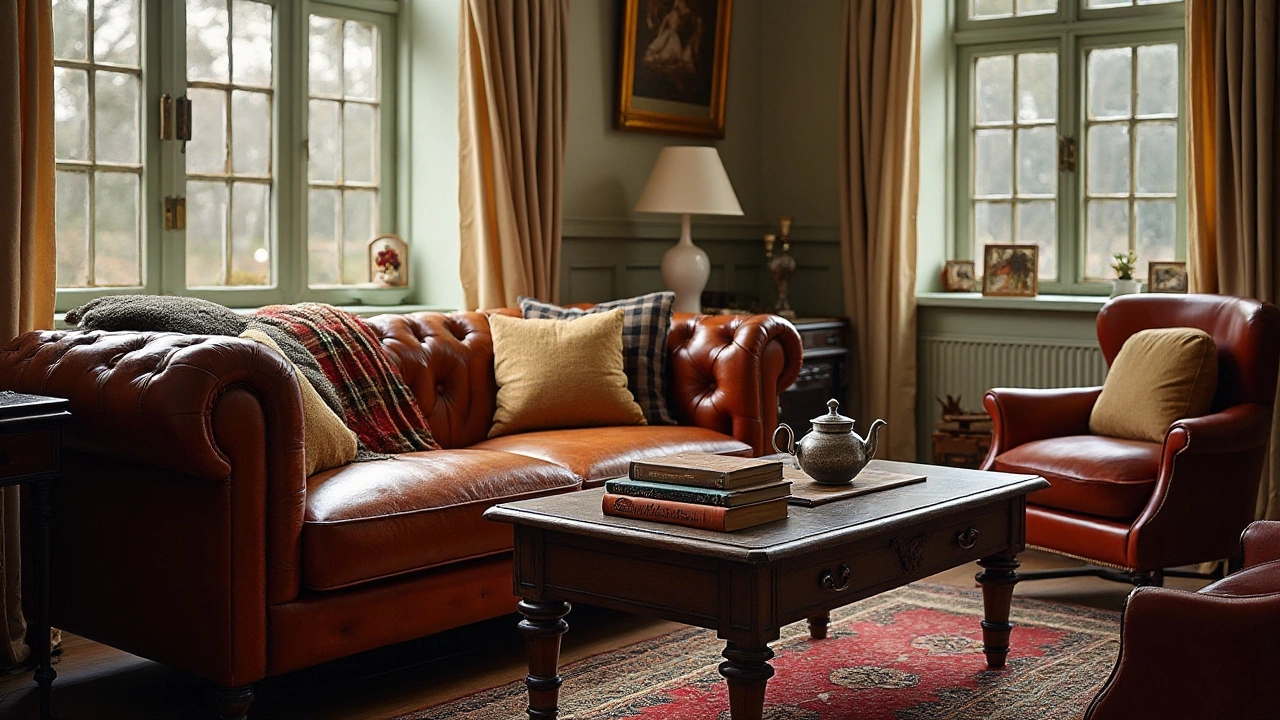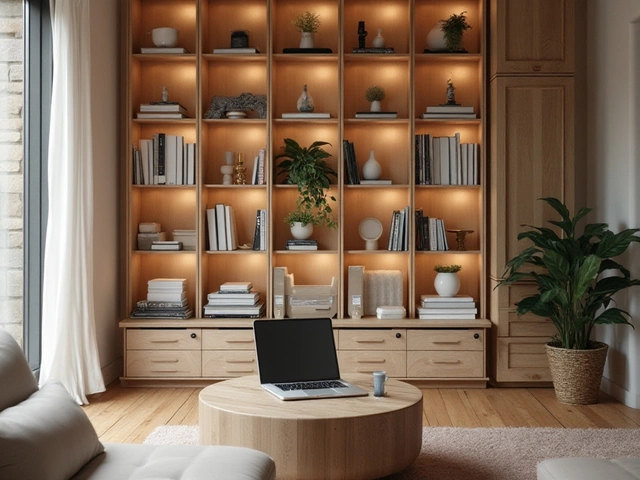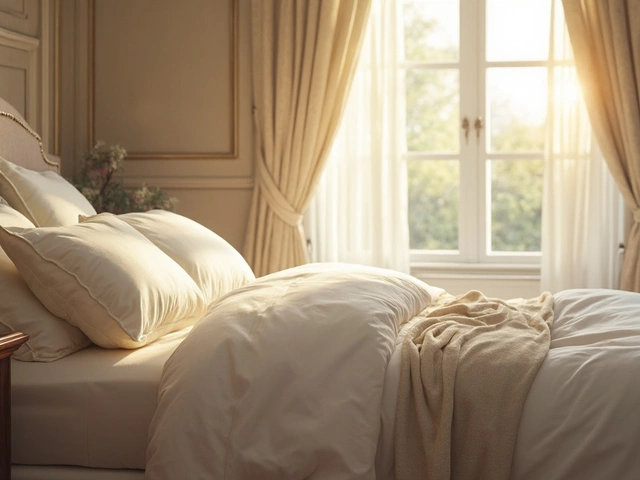When it comes to furnishing a home, the sofa often becomes the centerpiece of comfort and style. Whether you're stretching out on a lazy Sunday afternoon or hosting friends on a Saturday night, having a piece that endures both in looks and functionality is key.
But with a vast array of fabric options out there, making the right choice can be tricky. Each material carries its own set of characteristics, both in feel and durability. Leather, with its timeless appeal, or the newer synthetic fabrics, each tell their own story. Let's dive into what each material offers, highlighting the pros and cons, to help guide your next sofa purchase.
- Understanding Sofa Fabrics: Durability and Design
- Natural Fibers: Leather and Cotton
- Synthetic Options: Microfiber and Polyester
- Tips for Maintaining Your Sofa
- Matching Material with Lifestyle Needs
Understanding Sofa Fabrics: Durability and Design
When it comes to choosing the perfect sofa for your home, understanding the sofa materials is crucial. As you begin to explore, a key aspect to consider is how well the fabric will hold up over time. Some materials are revered for their robustness and timeless appeal, while others might catch your eye because they feel good to the touch or come in a color that complements your living room. All this can make the selection process as thrilling as it is daunting. Leather, often seen as the epitome of class and durability, requires regular upkeep to prevent cracking. However, if treated well, it can last decades and develop characterful patina over time, bringing a sense of warmth and elegance to a room.
The spectrum doesn’t end there—far from it. Microfiber and synthetic blends like polyester are gaining popularity due predominantly to their resistance to stains and fading, which makes them particularly appealing for families with young children or pets. These materials can mimic more expensive textiles but often come at a fraction of the cost. Due to technological advancements, these durable sofas can appear just as stylish as their natural counterparts and, in some cases, are even easier to maintain, sparing you the distress of ongoing wear and tear.
Choosing Based on Lifestyle
Your daily routines and lifestyle play an instrumental role in deciding which sofa fabric is ideal for you. If your home is a social hub, filled with guests coming in and out, an easily cleanable fabric like microfiber might be your best companion. Meanwhile, for those prioritizing aesthetic luxury over all else, the rich texture of velvet or the understated sophistication of linen might win out, though they often demand more care. John B. Cary, a notable interior designer, once said,“The right fabric not only defines how a sofa looks, but it writes the narrative of how it functions in your life.”An evocative choice of words, but true in every sense.
With the myriad options available today, it's also worth noting some unexpected stars on the market. Olefin, for instance, offers unparalleled resistance to moisture and chemicals, making it another viable choice for families keen on outdoor or sunlit spaces. Its fibers, crafted from polyolefin, lend themselves to being both strong and resistant to abrasions. This remains a critical factor when seeking long-lasting couches that can brave both time and family antics.
Natural Fibers: Leather and Cotton
When it comes to choosing a sofa, natural fibers like leather and cotton offer a unique blend of durability and comfort. Leather, in particular, is renowned for its long lifespan and timeless elegance. Many find that leather sofas only get better with age, developing a rich patina that adds character to their living space. It's no secret that leather is resilient, resisting tears and punctures better than many synthetic alternatives. This makes it a fantastic choice for high-traffic areas and homes with pets or children. Cotton, on the other hand, may not be as tough in the face of sharp claws, but it excels in breathability and comfort. Its natural fibers feel soft against the skin, making it perfect for those cozy nights in. Plus, cotton sofas come in a wide variety of colors and patterns, offering plenty of choices to match any decor.
Leather does require some upkeep to stay in top condition. Regular cleaning and conditioning treatments will help keep it supple, preventing cracks and drying out. Some might find this maintenance a little daunting, but the rewards can be substantial in terms of durability. With proper care, leather sofas often last for decades. Cotton, while forgiving to spills due to its washable nature, might show signs of wear and fading faster than leather, especially under direct sunlight. While not overly high-maintenance, cotton covers might need occasional washing and can benefit from a protective slipcover. Interestingly, leather has been noted for its hypoallergenic properties since it doesn’t harbor dust mites, pet dander, or other allergens as easily as woven fabrics. This can be a major boon for allergy sufferers. As famed interior designer Nate Berkus once said,
"In a timeless piece like a leather sofa, you're not just investing in furniture, you're investing in a lifetime of stories and comfort."
Comparing prices, leather tends to be on the higher end, but this investment often pays for itself through longevity and enduring style. In contrast, cotton sofas are generally more budget-friendly, offering a practical alternative without sacrificing comfort. It's common for households to have cotton sofas due to their affordability and range of designs. Each material has its own strengths and best-use scenarios. Leather shines in sophisticated spaces needing a touch of luxury, while cotton fits seamlessly in cozy, casual settings. Understanding these nuances can help narrow down the perfect choice for your home. A quick look at the popular opinion through a small survey shows that 58% of households prefer the unmatched durability and aesthetic of leather, while 42% opt for cotton’s versatile comfort and ease of maintenance.
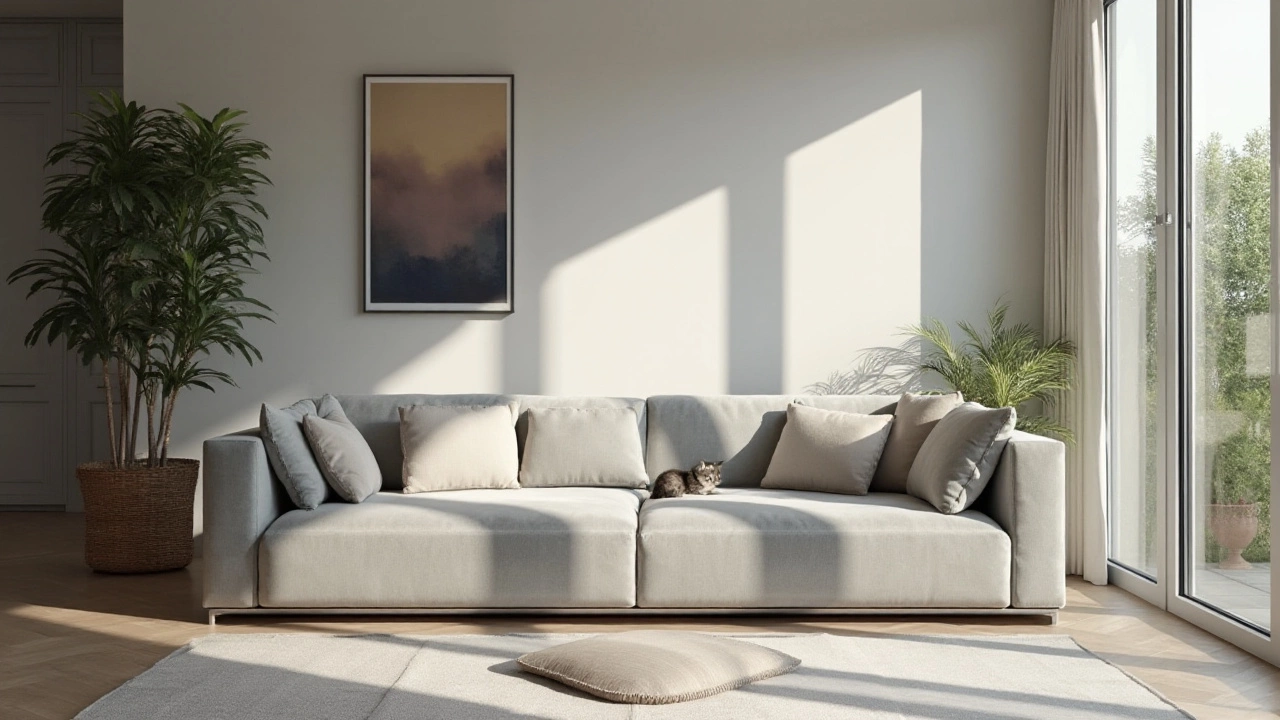
Synthetic Options: Microfiber and Polyester
In today's market, microfiber and polyester emerge as two leading contenders in the realm of synthetic sofa materials, both offering a blend of durability and cost-effectiveness. Stemming from the evolution of fabric technology, these materials have quickly gained popularity due to their resilience and ease of maintenance. Microfiber, recognized for its ultra-fine fibers, boasts an impressive ability to mimic the lush texture of suede while being inherently robust against wear and tear. One of its standout features is its resistance to stains, making it a favored choice for homes with children or pets who can inadvertently be messy. On the other side, polyester stands as a powerhouse in the realm of synthetic fibers. Known for its resilience and longevity, it resists fading, keeping the vibrant color of your sofa intact for years to come. Polyester blends often incorporate other fibers to enhance softness and comfort, ensuring that you don't have to sacrifice feel for durability.
Microfiber and polyester are often lauded for their budget-friendly nature compared to natural fibers like leather and cotton. The affordability of these materials allows homeowners to furnish their homes stylishly without stretching their budgets too thin. Their synthetic nature makes them less prone to absorbent spills, and they're generally easier to clean, with most stains easily coming off with a damp cloth and some mild soap. For instance, polyester's non-porous surface doesn't allow liquids to seep through, turning potential stains into minor hiccups easily addressed with a quick wipe. This characteristic means your sofa remains fresh-looking with less effort, which is a huge boon in fast-paced modern lifestyles.
While these materials are celebrated for their practicality, some points bear consideration. Despite its many advantages, microfiber can sometimes attract pet hair or lint, which might require occasional vacuuming to retain its pristine look. However, the upside is that what's caught can usually be removed with minimal fuss, leaving your couch looking as good as new. Polyester, although robust, can be susceptible to pilling, especially in high-traffic scenarios. This is where understanding different polyester blends can help choose a more pill-resistant fabric. For added peace of mind, diligent maintenance practices are key—a gentle vacuum every now and then, perhaps using an upholstery tool, plays a significant role in prolonging the life of your sofa.
The Home Textiles Association states, "With the right combination of fibers, synthetic options outperform many natural materials without sacrificing aesthetic appeal."
An interesting fact is that both microfiber and polyester's environmental impact is derived from their production processes. Although they are not as eco-friendly as natural fibers, advances in recycling technology have paved ways for synthetic materials to be reused, thus reducing their carbon footprint. Microfiber, in particular, uses fewer chemical processes in its dyeing stage, which can be slightly more environmentally considerate. Moreover, as consumers increasingly lean towards sustainable living, furniture manufacturers are working harder to source green alternatives, including recycled polyester. So, if ecological impact factors into your decision, seeking out synthetic options with recycled content might offer a satisfying middle ground between longevity and ecological responsibility.
Incorporating microfiber and polyester into your home doesn't mean you must compromise on style. Today's synthetics can mimic various natural textures and patterns, allowing homeowners to explore a range of aesthetics that align with their personal taste. Whether your decor leans towards sleek modern minimalism or embraces more traditional, ornate styles, these synthetic fabrics offer a diverse palette to play with. Careful selection based on your home's color scheme and lifestyle can add both beauty and practicality to your living space, ensuring your furnishings not only serve but also last.
Tips for Maintaining Your Sofa
So you've made an investment in a beautiful, new sofa, and naturally, you want it to last for years. Proper maintenance is key to preserving both its aesthetic appeal and structural integrity. First, make it a point to regularly vacuum your sofa using a soft brush attachment. By doing this weekly, you minimize the buildup of dust and dirt, which can become deeply embedded in the fibers over time. It might surprise you, but even materials like leather and microfiber benefit from regular vacuuming as it keeps allergens at bay.
Avoid placing your sofa in direct sunlight. Prolonged exposure to sunlight can lead to fading, weakening both the color and fabric. Leather in particular, although it boasts durability, can dry out and crack over time if left in harsh conditions. If it’s not possible to relocate your furniture, consider using protective covers or curtains to shield it during peak sunlight.
Spills are almost unavoidable, but how you handle them can make a big difference in the lifespan of your sofa. For liquid spills, start by blotting rather than rubbing, as rubbing can force the liquid deeper into the material. Depending on the material—be it cotton, polyester, or another type—gently blot with an appropriate cleaner. Always test any cleaning solution on a hidden area first. It's a practical tip also stated by many fabric care experts:
"A small patch test goes a long way in preventing larger mishaps," notes Sarah Coles, an interior designer known for her expertise in sustainable fabrics.
To extend the life of your sofa cushions, practice regular rotation. Switching cushion placement distributes wear evenly and helps maintain their shape, whether it's a family room favorite or a quieter sitting room piece. While at it, check the structural integrity of your sofa by tightening any loose legs or trims. A simple check can avoid accidents and maintain the stability crucial for long-lasting furniture.
If you notice any stains or dirt beyond regular household cleaners' reach, consider hiring a professional upholstery service annually. They possess the know-how and equipment to deep clean without causing damage. In essence, while durability often depends on initial material choice, ongoing care is equally crucial to ensure your beloved seating is a staple of comfort and beauty in your home for the long haul.
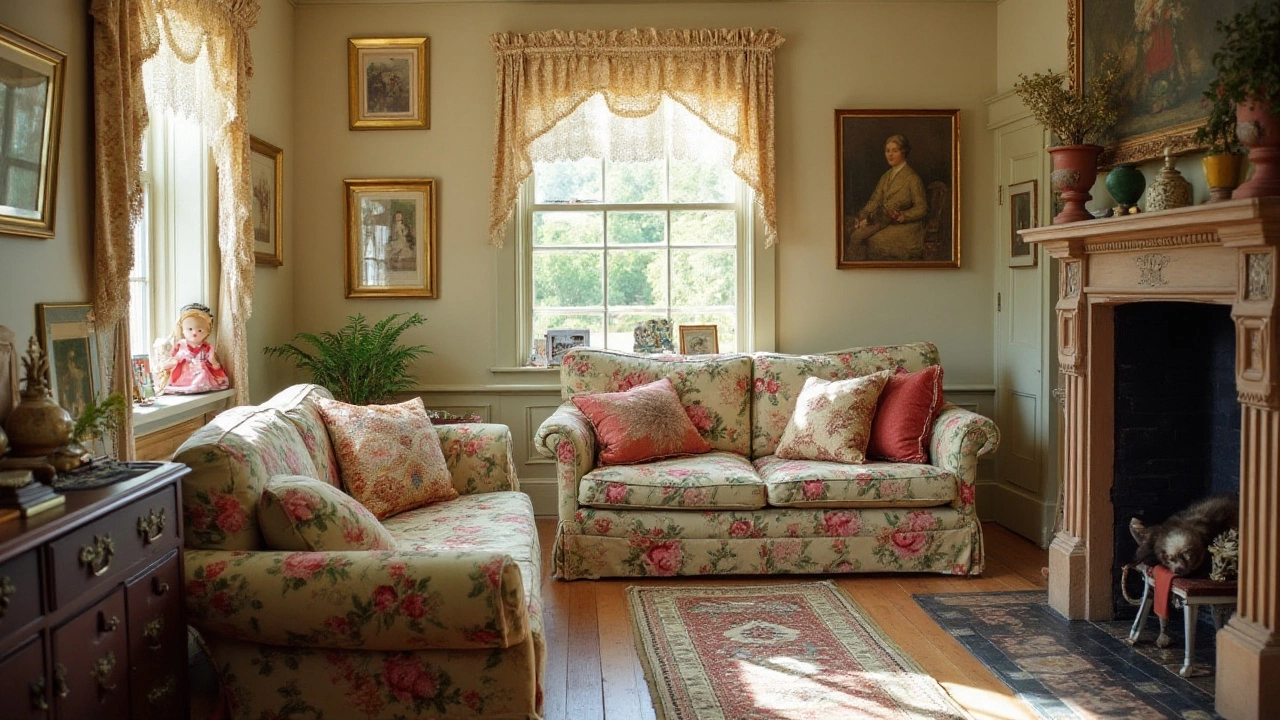
Matching Material with Lifestyle Needs
Choosing the right sofa material can often feel like navigating a dense forest. It's not just about what's trending, but what fits seamlessly with the rhythm of your daily life. Picture this: a bustling household with kids running around, pets claiming every square inch, and the occasional spill from an unexpected dinner party. In such settings, the durability of microfiber truly shines. Known for being easy to clean and resistant to stains, it can handle quite the whirlwind of activity without sacrificing comfort or style. Consider the feedback from countless families who've adopted microfiber sofas with a sigh of relief, proving one doesn't have to choose between elegance and endurance.
Now, on the opposite spectrum, there's the allure of leather. If your abode leans more towards sophisticated gatherings with minimal chaos, leather could just be your match made in heaven. Its timeless appeal and the unique character it develops over time make it a favorite among many. Yet, maintaining leather requires a touch more care. Regular conditioning and avoiding direct sunlight ensures it remains a centerpiece for years to come. Did you know? A beautifully aged leather sofa is often deemed more valuable, much like a fine wine savoring every year that passes.
What about eco-conscious individuals who seek sustainability without compromising on comfort? Enter organic cotton and linen. These natural fibers might need a little extra TLC in terms of cleaning, but they come with a smaller carbon footprint. If a green lifestyle is high on your priority list, such materials help you align your living space with your values. An interesting fact: cotton sofas, especially those with removable covers, are champions of flexibility, allowing for washing and freshening up with ease.
For those juggling a tight budget but refusing to compromise on quality, polyester blends offer a reliable alternative. Often crafted to mimic more luxurious materials at a fraction of the cost, these blends can withstand years of use with a smile. They're often more resistant to fading, making them ideal for sun-drenched rooms. A study in the interior design space suggests that homes with polyester furniture see less frequent replacements, something to consider carefully when planning your home decor investments.
Ultimately, it's about ensuring your furniture not only fits your space aesthetically but also supports and enhances the way you live. As Interior Designer Rachel Ashwell puts it,
"Your home should tell the story of who you are, and be a collection of what you love."With this philosophy in mind, exploring the options and understanding their attributes becomes less of a chore and more of a journey to a more personalized home environment.

